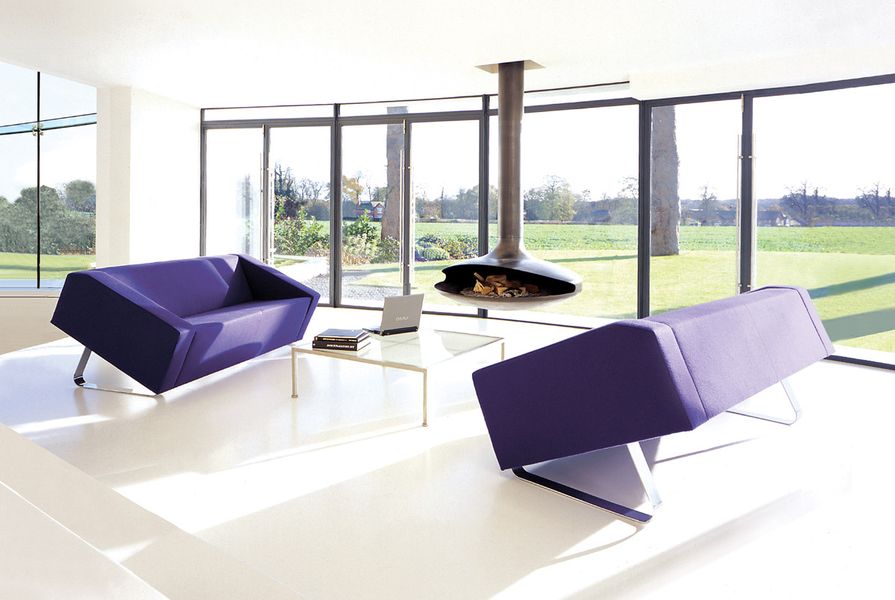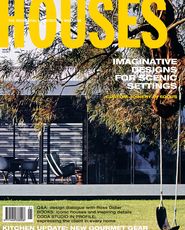How would you describe your design work?
I see my interior product designs as being utilitarian with a twist of character. Some of the art pieces, like the cow udder chandelier, are more like sculpture. My background is in fine arts sculpture, so it’s my mad passion to do these pieces every now and then. The art pieces are experimentations with new materials, which usually lead to production pieces incorporating some newly discovered techniques.
It’s a very realistic-looking cow udder. How did you make it?
There are veins, blood vessels and swelling marks, as if removed directly from a cow. We sprayed a combination of latex and silicone over a mould that was modelled on photographs of udders that we had taken on dairy farms. By the end of the process, the farmhands were getting suspicious of our loitering. The chandelier was suspended from meat hooks above my design fair stand in Milan. An airconditioner nearby set it jiggling. It was a really fun piece and a lot of people reacted to it but it was never intended to be sold. It was a piece to bring people to the stand.
Was the cocoon another one-off piece?
Cocoon was done for an exhibition in Melbourne’s Span gallery. It’s a combination of fibreglass and timber with 24 karat gold leaf. It was inspired by an abandoned chrysalis I’d seen at the Melbourne Zoo. “Chrysalis” is an old Greek word for gold, because a cocoon actually has a touch of real gold at the end. You can unzip this piece, hop inside and lie upside down with your feet at the top and the base curled around your head. It’s about the way the same body parts repeat and transform through nature.
Chrysalis is coated in gold leaf.
Image: Rob Anderson
How does your “twist of character” manifest in the production pieces?
With the Elfin stool, a section of tube has been animated by introducing an angle, which has given it some humanity and appeal to its shape. The stool was inspired by sitting on a paint can outside a hardware store and seeing its reflection distorted in a mirror. The slight curl gives it that character. The Bombala range was inspired by Mies van der Rohe’s Barcelona chair. I’ve always loved that chair but thought it looked old-fashioned. I wanted to embrace the function of the Barcelona chair and make it more contemporary. The original Barcelona design took the circulus design of an old Greek chair with curved legs so I put the emphasis on a reverse-cantilever leg formation. I wanted to make it functional and original with regard to its overall look and simplicity, and release it in a range of colours. The slightest touches of difference in a design can make the biggest impact.
So if you make the differences too big it doesn’t work?
No-one gets it. They may like it, they may love it, but they wouldn’t buy it. It’s always a balance. I think design is like a balancing act. You have to decide whether it’s going to be a one-off piece or a mass production item. The designer must always think “What’s the situation? What’s the brief? What am I trying to achieve? What does the market want?”
Explain your thinking behind the Obelisk lounge; it seems like a peculiar adjustment to a very familiar object.
It’s a traditional lounge – basically a box that’s angled up on its back legs. The legs knock down into the centre cavity so it’s easy to transport. Allermuir, a UK company, had a talent scout at the Milan fair. He saw it and organized for the prototype to be sent to England and a couple of months later they went into production. The Denver Art Museum has it all through the art gallery. We’ve had some spectacular jobs in France and Germany, as well as a building for the arts in Canberra, each of which has specified it.
The Obelisk sofa is manufactured by Allermuir.
Image: Rob Anderson
How important is comfort?
That was the secret, I think. Before the representative from Allermuir sat on the Obelisk lounge he said, “Gee, that doesn’t look very comfortable.” But when he took a seat he nodded his head and gave it the thumbs up. The balancing act was to make it sculptural as well as comfortable. If you want to sell in certain areas, like the commercial arena, it needs to be comfortable.
How important is sustainability to the future of furniture design?
I think it’s inevitable. If you don’t take sustainability seriously you’re going to get left behind. And I think people should be doing it, not just talking about it. But sadly sustainability all comes down to cost. It’s all very well to specify Green Star products but if the client doesn’t want to pay the price it soon goes out the window.
When young people go through design school are they made aware of these market realities?
If people knew the end result they probably wouldn’t start. But I also think there’s beauty in simply starting on a whim and letting the heart rule the head. That’s why the world goes around. I think that’s a nice aspect of being creative. You could be sitting in a bank earning your dollars per hour or you can try to live out your dreams. I didn’t start out as a businessperson. But surely you’ve got to make the business work and I think you have to bite the bullet sometimes and realize that you have to pay the bills. Persistence is a very important part of the formula – hanging in there when times are down.
So where do you see your company in ten years’ time?
I would like to see where we go with greater international recognition. Australia is a very small place. I think we’re advanced in our tastes and that per capita we really excel with regard to our creative output. But unless I’m a part of a world market there will be limitations. I’d like to keep dabbling around with plasticine, or whatever else I’m making models out of, in a small workshop. I think that’s where the magic happens.
Why is Australia becoming more enamoured with design?
We’re maturing and becoming cockier. And I think the Internet, phone calls and travel make us feel more connected. It’s amazing how even tiny places like New Zealand are now on the map. They’re getting a presence in Milan. People like David Trubridge are enjoying huge success. Anyone can do it. You’ve just got to find the right angle and then make it happen.
Is there an advantage to being an outsider? Does that give you a certain exoticism?
No. The exotic is hard to achieve these days. Even if you are exotic, how long will that exoticism last? What’s happening on the other side of the world is so exposed that it’s hard to push the exotic angle. And surely design is design no matter where you are in the world.
Who are your design heroes?
Philippe Starck, of course, and the architect Zaha Hadid. She does architecture that is extremely sculptural. I’ve recently had a look at all of her works and I admire the fact that they exist. They’re mental. They’re mad pieces. The fact that she’s been able to take really unusual concepts and has not only made models of them, and then full-scale models, but has actually navigated through all the realms of government to get those ideas made into buildings – that process is amazing. I mean, you do it for furniture and it’s a long process, but to do it for a building is incredible. And I find the processes are becoming a lot more interesting to me than the actual end piece.
An old adage from the music industry is “it’s ninety percent business, ten percent show.” Does that apply to the design industry?
That’s a shocking reality but it’s true. Often you see a relatively plain piece on show, like Duchamp’s Fountain, which was a urinal in an art gallery, and inevitably there are great designs out there that don’t get the same attention and go to waste. It’s all part of the balance of where it’s happening, how strong your business relationships are, how strong the piece is and what reference it has to a certain cultural time. You may have missed the boat by a few years. Maybe luck has a lot to do with it.
And being in the right place at the right time?
Exactly. It’s not like other people see your work and copy it. Everyone’s thinking on the same wavelength and coming up with the same concepts. And if they’re doing it at the right time it has to be luck. I was never a believer in luck but I think there’s got to be some formula for it.























